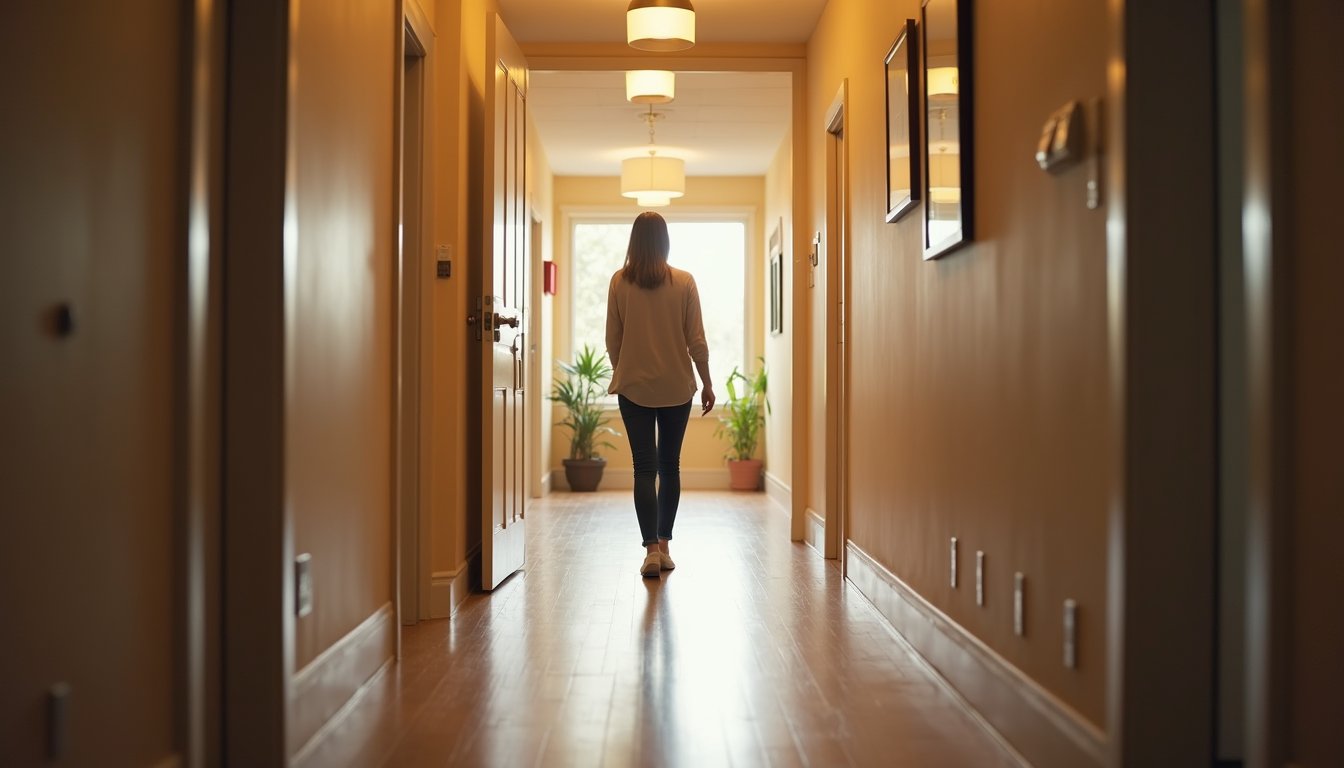You’ll find the most effective depression management comes from combining traditional treatment with physical recovery strategies. Research shows that exercise acts as a natural antidepressant, while talk therapy helps process emotions and develop coping skills. Start with just five minutes of daily movement, gradually building to three 45-60 minute sessions weekly. When paired with professional support, this dual approach can increase your treatment success rate by 25%. Understanding these evidence-based strategies will strengthen your path to recovery.
Understanding Depression’s Global Impact

While depression affects people across all demographics and regions, its global impact reaches far beyond individual suffering. With 280 million people worldwide living with depression, you’re looking at a condition that’s now the leading cause of years lived with disability globally. Recent studies show that young females experience depression at more than twice the rate of their male counterparts. Greece currently experiences the highest rates among all nations at 8.51% of its population. The scope of global depression varies greatly by region and demographic factors. You’ll find that women experience it 50% more frequently than men, while 35% of disabled adults report depressive symptoms compared to just 7% of non-disabled adults. Mental health treatment gaps remain stark, with 76-85% of people in low/middle-income countries lacking access to care. Even in developed nations, only 65% of diagnosed cases receive treatment, highlighting persistent barriers in mental health infrastructure and the urgent need for expanded access to services. For those aged 15-29, depression’s impact is particularly severe, as suicide has become the fourth leading cause of death in this age group.
Exercise as a Natural Antidepressant
Although traditional antidepressant medications remain common, exercise has emerged as a powerful natural intervention for managing depression. Research demonstrates that exercise benefits rival those of standard medications for mild-to-moderate depression, with high-intensity activities delivering the most significant mood enhancement effects. Studies suggest that regular physical activity can prevent depression symptoms from returning. The research shows moderate reductions in depression symptoms across multiple exercise types compared to control groups.
You’ll find that walking, yoga, and strength training provide robust antidepressant effects through multiple biological mechanisms. These activities boost endorphins, serotonin, and dopamine while reducing systemic inflammation and enhancing brain plasticity. Even simple activities like gardening or washing your car count toward beneficial physical movement. Starting with just five minutes daily can help break the cycle of depression-induced inactivity.
Start with 30-minute sessions of moderate exercise most days, gradually increasing intensity as you build strength. You can maximize results by combining different activities and participating in group classes, which add social support to your recovery journey.
The Power of Combined Treatment Approaches

While exercise and talk therapy each offer distinct benefits, combining these approaches can increase your treatment response rates by over 25% compared to single interventions. Having a mental health team available provides intensive specialized support during your recovery process. You’ll find that remote options, such as teletherapy paired with guided fitness programs, make it easier to maintain consistent engagement with multiple treatment modalities. Your recovery journey becomes more sustainable when you build an integrated support system that includes both therapeutic conversations and physical activity routines. The integration of psychological therapy with other treatments has shown to be more acceptable to patients than medication-based approaches alone. Research shows that a combination approach of medication and psychotherapy is particularly effective for those with severe depression.
Exercise Plus Talk Therapy
Two powerful treatment approaches, exercise and talk therapy, create a synergistic effect in managing depression. When you combine physical activity with emotional processing, you’ll experience enhanced mood benefits and improved treatment adherence. Research shows this combination reduces symptoms 1.5 times more effectively than either approach alone, while supporting long-term neurochemical balance. Similar to how 60 percent of patients show improvement with antidepressant medications, this combined approach offers substantial benefits for many individuals. A recent meta-analysis examining 218 clinical trials demonstrates the significant effectiveness of exercise-based interventions for depression treatment. WHO data indicates that nearly a billion people worldwide are affected by mental health disorders, making accessible treatment options crucial.
- Walking, yoga, or strength training paired with therapy sessions optimize stress reduction
- Both high-intensity workouts and gentle movement contribute to symptom management
- Daily activities like gardening or housework complement formal treatment
- Tracking your progress reinforces motivation and sustained recovery
You don’t need intense workouts to see mental health benefits; even low-intensity movement helps. The key is consistency in both exercise and therapy participation, allowing you to address both physical and psychological aspects of depression simultaneously.
Remote Treatment Integration Options
Modern telepsychiatry has revolutionized depression treatment by combining medication management with remote therapy options. The telepsychiatry benefits are clear: you’ll receive the same quality care as in-person visits while eliminating geographical barriers and travel costs. Research shows equivalent effectiveness for remote versus traditional treatment, with medications like SSRIs and SNRIs maintaining their therapeutic impact. Patient satisfaction levels remain consistently high across both treatment methods.
You’ll find that medication adherence remains strong in telepsychiatry settings, with studies demonstrating comparable engagement rates to in-person care. Experienced clinicians can even conduct a thorough psychiatric evaluation online to provide accurate diagnosis and treatment planning. The platform’s flexibility allows for customized treatment frequencies and seamless integration of proven therapies like CBT and IPT alongside your medication regimen. This thorough approach becomes especially cost-effective when you’re located more than 22 miles from your provider, making specialized psychiatric care accessible regardless of your location.
Building Sustainable Support Systems
Building effective support systems for depression management requires a strategic combination of treatments, as demonstrated by compelling research outcomes. Combined approaches show superior therapy effectiveness, with 48% remission rates compared to single-treatment methods, and you’re 27% more likely to respond positively to integrated care plans. Recent studies show that drop-out rates remain consistent between treatment types, indicating strong patient engagement regardless of approach.
Your sustainable support networks should include:
- Regular therapy sessions combined with medication management, reducing relapse risk considerably
- Coordinated care between your mental health providers to guarantee treatment alignment
- Ongoing assessment and adjustment of treatment strategies based on your response
- Integration of psychosocial support systems to address underlying causes
When building your support framework, consider that combined therapy shows higher tolerability than medication alone and maintains equivalent acceptability to psychotherapy. This approach provides thorough coverage while respecting your treatment preferences and individual circumstances.
Remote Therapy: Breaking Down Barriers

Through remote therapy platforms, you’ll find professional mental health support accessible from your home, office, or any private space that works for you. You’re no longer limited by geographic barriers, transportation challenges, or scheduling conflicts that traditionally prevent many from accessing quality depression treatment. Your therapist can deliver personalized, evidence-based interventions through secure video sessions, messaging, or phone calls, adapting the approach to match your specific needs and circumstances. Studies show that patients save an average of 121 minutes per session by choosing teletherapy over in-person visits.
Accessibility From Any Location
Remote therapy has revolutionized mental health treatment by dismantling traditional geographic barriers to care, with data showing that 60% of individuals would consider teletherapy as a viable option. The teletherapy benefits are particularly evident among younger demographics, where digital accessibility aligns with modern lifestyles and reduces stigma-related barriers to treatment.
Research demonstrates multiple advantages of remote therapeutic options:
- Phone-based and videoconferencing psychotherapy show equivalent effectiveness to in-person sessions for treating depression and anxiety
- Audio-only interventions maintain strong engagement rates in rural areas with limited internet access
- Text-messaging platforms provide viable alternatives when video conferencing isn’t feasible
- Multiple communication modalities adapt to your technological capabilities, from basic SMS to high-bandwidth video sessions
You’ll find these flexible options particularly beneficial when managing depression during recovery, regardless of your location or connectivity limitations.
Breaking Treatment Access Barriers
While telehealth platforms have expanded access to mental health services, significant barriers still impede widespread adoption and effectiveness of remote therapy. Insurance disparities present a major hurdle, with only 46% of psychiatrists accepting Medicaid, leaving many lower-income individuals without viable treatment options.
You’ll find that telehealth accessibility faces multiple challenges beyond insurance coverage. Digital literacy gaps and platform usability issues can make it difficult to navigate virtual therapy effectively. Additionally, limited reimbursement policies for remote services often discourage provider participation, while workforce shortages further restrict available care options. If you’re seeking treatment, you might encounter higher rejection rates with Medicaid compared to private insurance, and out-of-pocket costs can be prohibitive for those who are uninsured or underinsured.
Personalized Care Despite Distance
Despite common misconceptions about virtual treatment, research confirms that telehealth therapy delivers outcomes equivalent to face-to-face sessions, with cognitive-behavioral therapy showing particularly strong results. Your personalized therapy experience can now transcend geographical limitations while maintaining clinical effectiveness.
Remote engagement options have evolved to meet diverse needs and preferences:
- Video sessions provide real-time interaction with your therapist, matching in-person efficacy for anxiety management
- Audio-only options effectively serve those with limited internet access or privacy concerns
- Text-based support combines with scheduled sessions for enhanced therapeutic support
- Multi-modal platforms integrate journaling, messaging, and video calls for all-encompassing care
This flexibility in delivery methods doesn’t compromise quality, studies show remote therapy actually yields better retention rates than traditional settings, ensuring you receive consistent support throughout your recovery journey.
Building Sustainable Recovery Habits
Establishing sustainable recovery habits serves as a cornerstone for managing depression effectively. Through habit stacking and positive reinforcement, you’ll build a foundation that supports your mental health journey. Start by integrating physical activity into your daily routine, as regular exercise naturally reduces anxiety and depression through endorphin release.
Focus on developing structured routines that combine proper sleep hygiene, Mediterranean-style eating patterns, and stress management techniques. You’ll find that these evidence-based practices work synergistically to enhance your emotional regulation and trigger management. Avoid harmful coping mechanisms like alcohol use or smoking, as they can derail your progress. Instead, embrace mind-body practices and consistent schedules that reduce decision fatigue. Remember, sustainable habits create lasting change when supported by proper mental health care.
Personalized Exercise Plans for Mental Health
To maximize the mental health benefits of exercise during recovery, you’ll want to start with manageable 15-20 minute sessions that gradually increase to the recommended 45-60 minute duration over several weeks. You can choose between aerobic activities like walking or swimming, resistance training with weights or bands, or a combination of both based on your preferences and current fitness level. Setting specific, measurable goals and tracking your progress through a workout log will help you maintain consistency while building toward the ideal frequency of three sessions per week.
Starting Small, Building Up
When managing depression through exercise, personalized plans that start gradually and build systematically prove most effective for long-term success. By focusing on small victories and gradual change, you’ll establish sustainable habits that support your recovery journey.
Begin with these evidence-based progression strategies:
- Start with 45-minute moderate-intensity sessions, like brisk walking or basic bodyweight exercises, three times weekly
- Choose activities you enjoy and can easily integrate into your daily routine, such as morning stretches or lunchtime walks
- Build intensity slowly over 12 weeks, adjusting based on your comfort and energy levels
- Track your progress using simple metrics, celebrating improvements in mood and physical capacity
This structured approach helps prevent burnout while systematically strengthening both your physical and mental resilience.
Exercise Type Selection Guide
Different types of exercise offer distinct mental health benefits, making personalized selection essential for maximizing depression recovery outcomes. Your exercise selection strategies should align with your demographic profile and specific needs. If you’re an older adult or male, prioritize yoga for its superior anxiety-reduction benefits. For women and younger individuals, strength training delivers optimal results.
Consider incorporating resistance training if you’re dealing with anxiety, as it shows particularly strong efficacy. Your tailored workout plans can combine multiple exercise types, for example, pairing aerobic activities with strength training. Mind-body exercises like yoga and tai chi provide additional psychological benefits, while structured combinations prevent plateaus and enhance consistency. Choose higher-intensity workouts for stronger therapeutic effects, but start with lower intensities if you’re building new exercise habits.
Tracking Progress With Goals
Since personalized exercise plans yield a 72% improvement rate in depressive symptoms, establishing clear tracking methods and measurable goals becomes essential for sustained progress. Your progress evaluation should focus on both mental health improvements and physical activity metrics to guarantee therapeutic effectiveness.
To optimize your goal setting and tracking, implement these evidence-based strategies:
- Use standardized depression scales to quantify your symptom improvements at regular intervals
- Monitor your exercise intensity levels, making sure you maintain moderate-to-vigorous activity appropriate for your capacity
- Track your session consistency, aiming for three 45-60 minute sessions weekly
- Document physical improvements alongside mental health changes through regular check-ins
Regular progress monitoring helps maintain engagement while allowing for timely adjustments to your exercise plan, maximizing both adherence and therapeutic benefits throughout your 12-week program.
Monitoring Progress and Adapting Strategies
Effective monitoring of depression recovery requires a thorough approach that combines clinical assessment tools with personalized tracking methods. You’ll work with your clinician to implement standardized measures like the PHQ-9 or GAD-7, which provide quantifiable data about your progress. These tools help track symptom severity and treatment effectiveness over time.
Your recovery monitoring will likely incorporate both traditional and digital methods. You can use mood journals or tracking apps to document daily emotional states, while participating in regular check-ins with your care team. Based on your progress tracking data, your treatment plan can be adapted through tool-based adjustments or therapy modifications. This might include switching therapeutic approaches, adjusting medications, or integrating additional support services when initial strategies show insufficient improvement.
Creating Long-Term Support Systems
Building a robust long-term support system marks an essential step in sustaining your depression recovery progress. Research shows that thorough support networks considerably improve recovery outcomes and reduce recurrence risks. You’ll need to combine professional care with community resources to create a sustainable recovery environment.
Key components of your long-term support system should include:
- Regular access to specialized mental health professionals who can monitor your progress and adjust treatment plans
- Participation in support groups that provide peer validation and practical coping strategies
- Engagement with community-based programs offering resources for symptom management and medication support
- Collaboration with workplace wellness programs that can help maintain productivity while managing recovery
Preventing Relapse Through Active Recovery
Maintaining your progress in depression recovery requires a proactive approach to relapse prevention through evidence-based strategies. Research shows that combining mindfulness techniques with systematic symptom monitoring greatly reduces your risk of recurrence. You’ll benefit from implementing structured recovery strategies, including Mindfulness-Based Cognitive Therapy (MBCT), which can decrease relapse risk by up to 53%.
To strengthen your recovery, focus on developing psychological flexibility through acceptance and cognitive defusion practices. You’ll want to track subtle changes in your mood, sleep patterns, and behavior while maintaining regular mental health check-ins. If you’re on antidepressants, work with your healthcare provider to optimize treatment, as combination therapy with CBT shows the highest efficacy for preventing relapse and managing residual symptoms.
Integrating Mind-Body Wellness Practices
Research demonstrates that mind-body wellness practices offer powerful tools for depression recovery, with yoga showing particularly strong evidence (SUCRA 82.2%) for symptom reduction. These approaches integrate physical movement, breathwork, and mindfulness meditation to enhance neurochemical regulation and emotional resilience.
You’ll find several evidence-based options to support your recovery:
- Yoga combines postures and breathing to regulate dopamine and reduce anxiety
- Dance therapy (SUCRA 77.5%) enables creative expression while processing emotions
- Tai Chi’s gentle movements promote focus and stress relief
- Mindfulness meditation complements traditional therapy and medication
When integrated consistently into your treatment plan, these practices build recovery strength through improved body-brain communication. While individual results vary, incorporating mind-body techniques provides valuable skills for long-term symptom management and emotional regulation.
Frequently Asked Questions
How Long Should I Wait Before Telling My Employer About Depression?
Consider workplace disclosure of your mental health condition after you’ve experienced symptoms for at least two weeks and have started professional treatment. You’ll want to assess your current job performance, document your symptoms, and understand your legal rights under ADA. If your depression affects your work quality, don’t wait too long; early disclosure can help secure accommodations. Consult with your healthcare provider about timing and approach.
Can Depression Medication Affect My Ability to Exercise Safely?
Yes, some depression medications can affect your exercise capacity and safety. Common medication side effects like dizziness, fatigue, or blood pressure changes may require exercise adaptations. You’ll need to work closely with your healthcare provider to monitor these effects and adjust your routine accordingly. While exercise generally enhances antidepressant effectiveness, especially with SSRIs, it is crucial to start slowly and make modifications based on how your body responds to both medication and activity.
What Role Do Family Genetics Play in Depression Treatment Success?
Your genetic predisposition can greatly influence treatment efficacy for depression. Research shows that your family history affects both how you respond to specific medications and your overall recovery trajectory. If you have close relatives who’ve responded well to certain antidepressants, you’re more likely to have similar results. Modern pharmacogenetic testing can help your healthcare provider tailor treatment plans based on your genetic profile, potentially reducing trial-and-error approaches.
Should I Continue Antidepressants if Exercise Therapy Shows Positive Results?
You shouldn’t discontinue antidepressants based solely on exercise benefits, as research shows ideal outcomes often come from combining both treatments. While exercise demonstrates strong antidepressant efficacy, the synergy between medication and physical activity can provide enhanced therapeutic effects. You’ll need to work with your healthcare provider to evaluate your specific situation and potentially develop a supervised tapering plan if medication reduction is appropriate for your case.
How Does Seasonal Change Impact Depression Management and Exercise Routines?
Seasonal affective changes can greatly impact your depression management and exercise motivation. When daylight decreases, you’ll likely experience disrupted circadian rhythms and reduced serotonin levels. You’ll need to adapt your exercise routine by scheduling indoor workouts during daylight hours when possible, joining group fitness classes to maintain accountability, and using light therapy before workouts. Consider tracking your activity levels to confirm you’re maintaining consistency despite seasonal challenges.






